This is not the Ferguson I thought I grew up in
There was a pear tree to the rear of our house when I grew up in Ferguson, Missouri, more than 50 years ago. As I’ve struggled to understand the violence that has plagued my old hometown in recent weeks, it has come to symbolize for me much of what was going on in that far-away time.
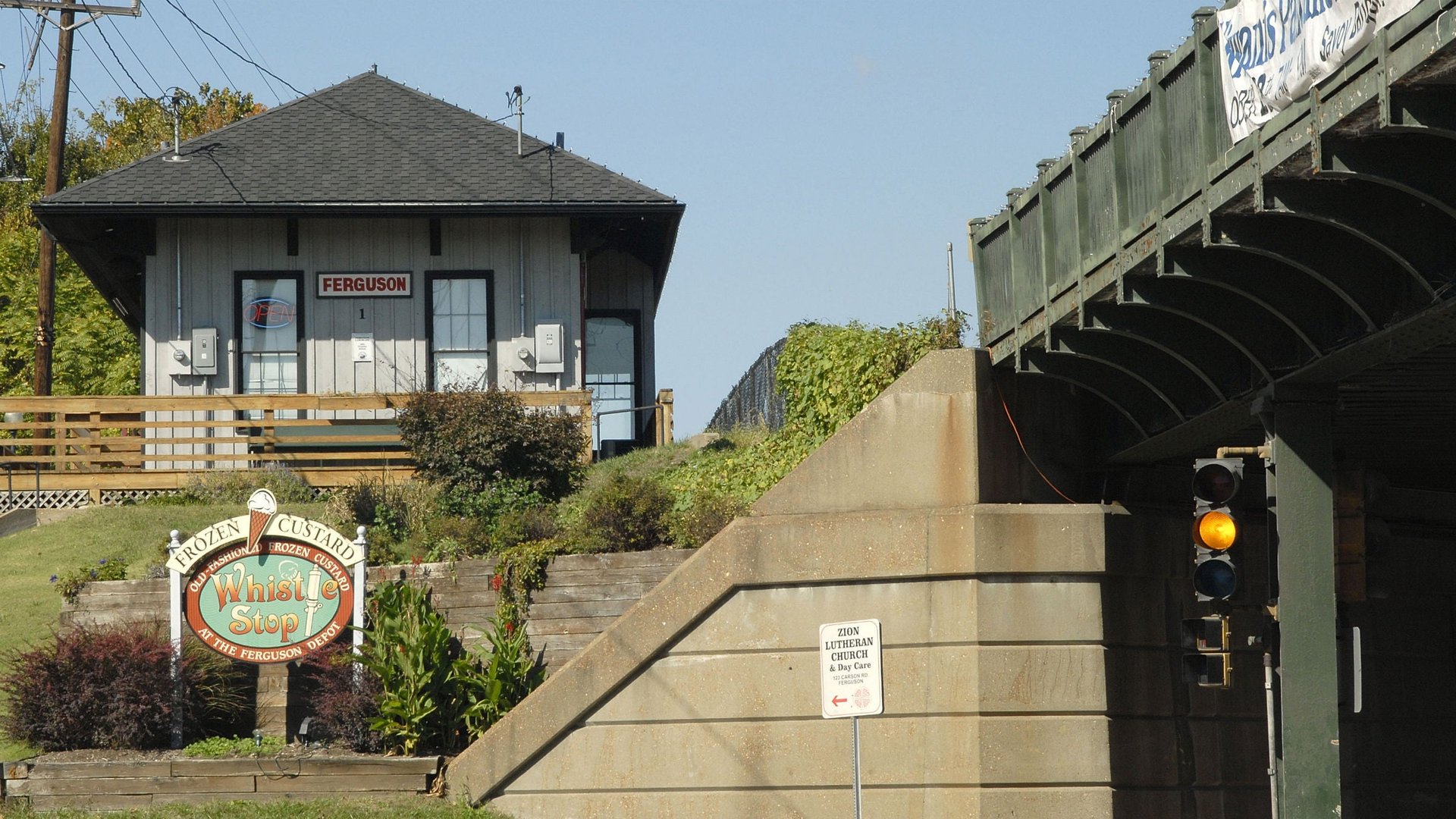

There was a pear tree to the rear of our house when I grew up in Ferguson, Missouri, more than 50 years ago. As I’ve struggled to understand the violence that has plagued my old hometown in recent weeks, it has come to symbolize for me much of what was going on in that far-away time.
The grass didn’t grow very well beneath its canopy, and during the summer my brothers and I used to drag toy tanks and rubber soldiers through the grey dust around its base. We fought fierce, imaginary battles there in which issues of right and wrong were never in doubt, and where we could control the outcome as we pleased. The good guys, as we saw them, always won.
Children being children, we never guessed that the seeming stability of our “real” world would ultimately turn out to be just as illusory as the games we played in the shade of that pear tree.
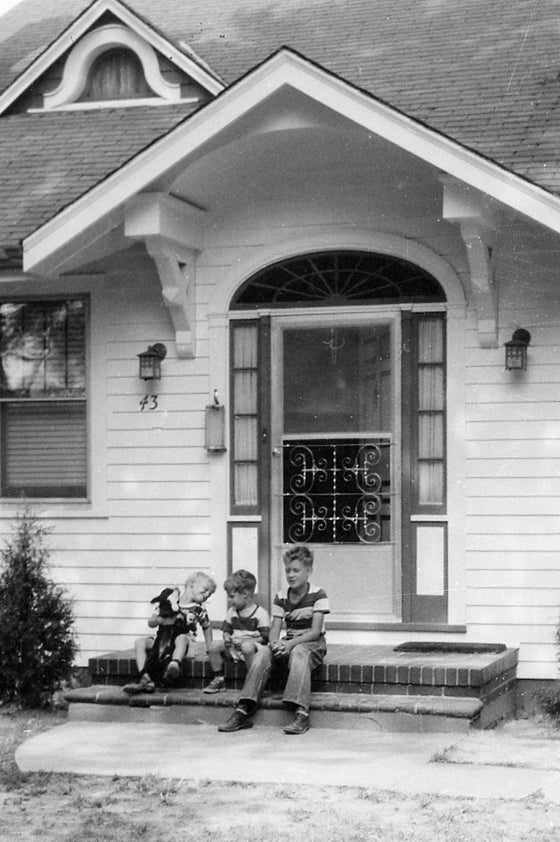
Although Ferguson was all but totally white, it abutted a town called Kinloch. That community had been established in the 1890s for a white clientele, but ended up as a black enclave after one or two African American families moved in. Unlike our two-story Dutch colonial home and its idyllic, tree-lined street, Kinloch was characterized by crudely constructed shacks with outdoor plumbing and modest working class houses, often sited along rutted, unpaved lanes. Carson Road, just half a block from where we lived, was one of only two thoroughfares that ran directly from Ferguson into Kinloch. Although Carson was never barricaded, the other through street—Suburban—was blocked until as late as 1975.
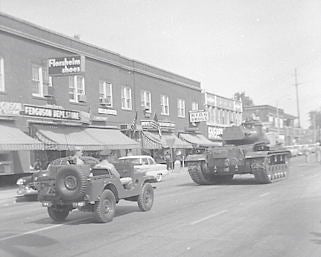
So we knew that black people lived nearby, but we didn’t consider them to be neighbors. A very small store—much too small to be called a market—was just a few blocks away, about mid-point between our home and the Kinloch city limit. We walked there regularly to purchase bubble gum and those chalky sugar cigarettes that were sold to children back then. As far as we were concerned, Kinloch could have been on the moon.
There were exceptions to that rule, however. My grandmother lived in a community called Berkeley, on the other side of Kinloch. Like Ferguson, Berkeley was all white in the 1950s, and is populated by African Americans today. My mom, a very timid woman who hardly ever got behind the wheel of a car, nonetheless drove us through Kinloch occasionally to visit our grandmother. She assumed, I suppose, that we were immune to the effects of poverty because we were white. One afternoon, however, we passed by an outdoor bar where several black men were drinking. Suddenly one of them jumped up and pulled a knife on another of the drinkers, who smashed a beer bottle on the table as he turned to face off against his antagonist.
Mom hit the gas at that point, and I didn’t see what happened next. Although the incident was never discussed by my parents in front of my brothers and me, mom never again drove through Kinloch without my dad in the car. In fact, she quit driving all together not long thereafter. And I’ve never forgotten that brief encounter with what was then a strange and alien culture.
On Sundays, all of mom’s brothers and sisters, and their kids, gathered at grandma’s. They were good people; very few had graduated from high school much less college, almost all the women stayed home during the day, and the men mostly ran construction or building supply firms. I cherish their memory, but they were inevitably creatures of their time.
Although the word ‘”racist” wasn’t used much in the 1950s, there’s no doubt that many of their attitudes would be classified in that way today. Looking back, I suspect their feelings toward African Americans were bundled up in their belief that the world they lived in was properly organized (they were pretty well satisfied with their lot, after all), and those who differed from white norms weren’t worthy of their full respect. They didn’t eschew the “N” word. They would laugh at African Americans, and they would even with some frequency extend a helping hand to individual black people, but they could not admit them to full equality.
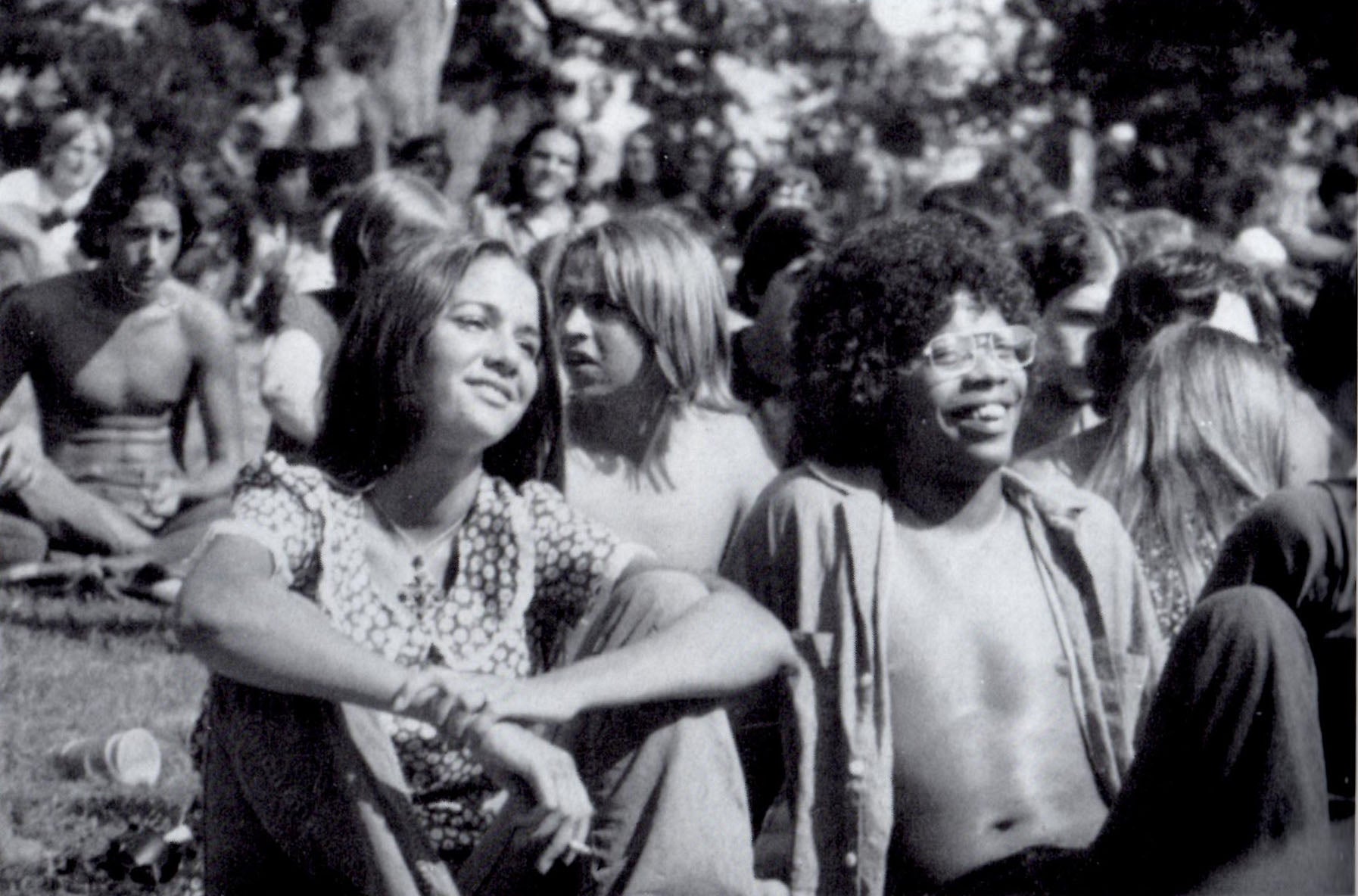
When the Civil Rights Movement began to pick up steam, conversation often turned to Dr. Martin Luther King Jr., and whether he was really a Communist. One summer evening we all went out on the lawn in front of my grandmother’s house to watch flames rising from a home in Kinloch, a bit more than a mile away. That prompted one of my uncles to tell a joke about a group of firefighters who were summoned to put out a similar blaze while playing pinochle. “Deal another hand,” the punch line went. “Maybe a couple more of them will burn down.”

Although we lived right next to a totally black community, as was the case in many states at that time, Missouri law required that schools be segregated. Somehow the Ferguson district included one block of one street in Kinloch, however, and Vernon School was built solely to house the small number of kids who came from that neighborhood.
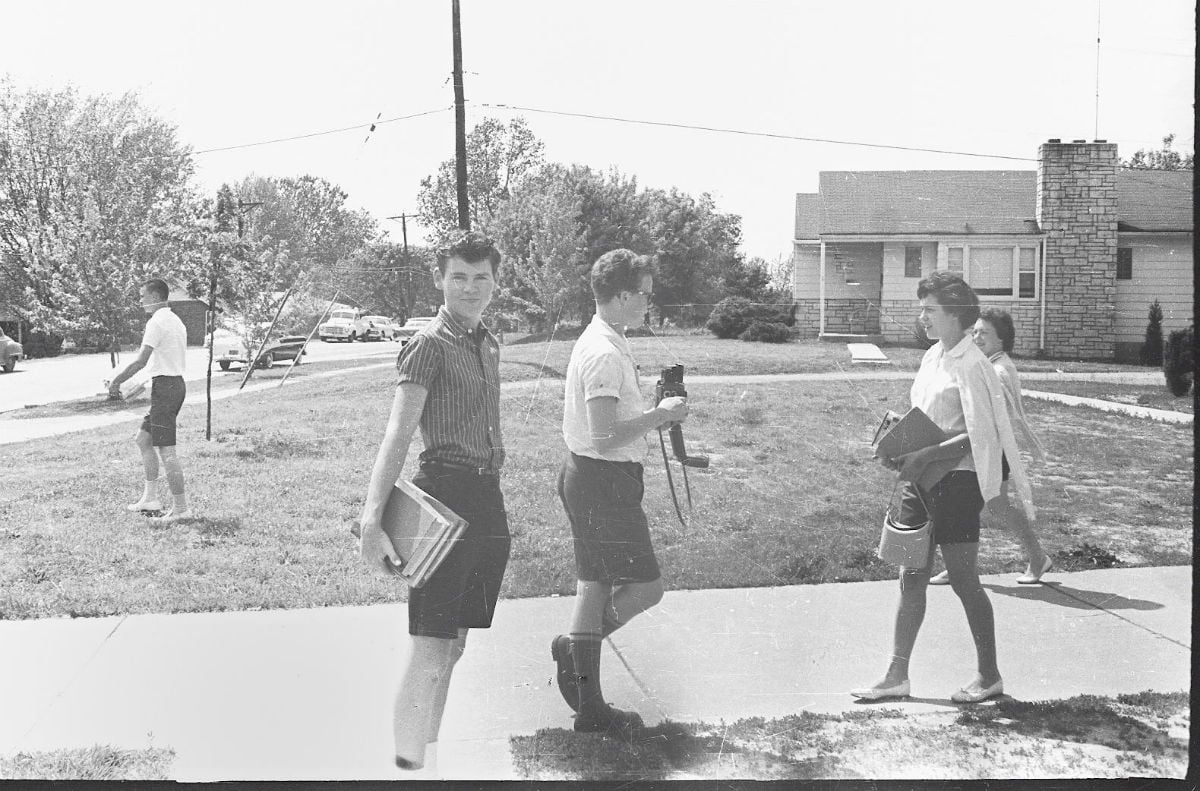
Many of the Vernon kids dropped out as they advanced to higher grades, and even after Brown vs. Board of Education, things didn’t change much until the 1970s. My high school class of almost 900, which graduated in 1966, contained fewer than half a dozen black students. Courses were “tracked by ability” at that time, and woodworking was the only class I shared with a black person.
After completing graduate school, my wife and I returned to Ferguson and lived there for several years in the 1970s. Since then, we’ve remained in contact with the community, and until only a few years ago we attended the almost completely white church I went to as a boy. It stands just blocks away from where the recent protests occurred.
The racial changes that have taken place since I was a child have been inexorable, but slow. Certainly the percentage of black residents increased visibly over time; certainly there were no longer areas of the city populated solely by whites; the nature of the central business district altered a bit, with the appearance of a Chinese fast food shop and stores that offer beauty products that appeal to African American women. But from my perspective, those changes didn’t seem to make much difference—people still kept up their property and were civil to one another in the street.
And yet, in retrospect I’m sure some level of animosity must have existed among the city’s African American residents all along, even though it never seemed to be directed at their community or their white neighbors. And indeed, except for the local police department, that still seems to be the case. There was never a sense of threat, never a feeling that one could drive in some parts of town but not others.
That pear tree still stood behind our old house the last time I drove by, and the neighborhood was still charming.
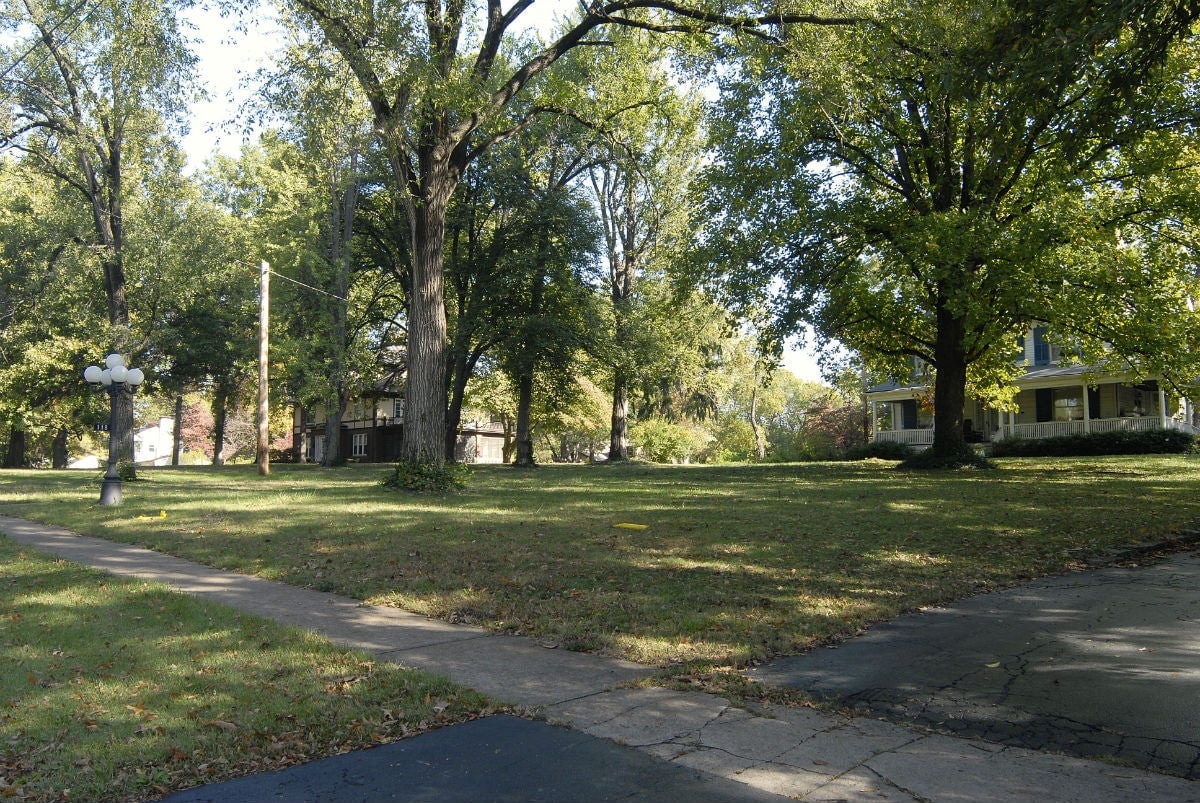
But looking back it’s evident that, although issues of race never seemed to be there, they always were. We saw black people, of course, but they remained “the other.” And, even when we got to know a few blacks as friends, they somehow became “white.” We never thought of race in broader, societal terms, or as a factor that warped the lives of people we should have considered our neighbors, and fellow human beings. With a few laudable exceptions, most whites didn’t consider race to be something we should address together, as one community rather than two, working with our black brothers and sisters. In the end, it was just a faintly humorous and very occasionally scary inconvenience that didn’t seem to bother us all that much, or all that often, and we hoped never would. We didn’t have to face up to it, so far as we knew, and therefore we didn’t.
Recent events have demonstrated what a terrible mistake that was.